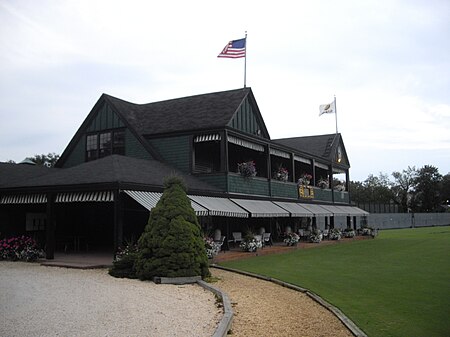Seabright Lawn Tennis and Cricket Club
1877 establishments in New JerseyAmerican club cricket teamsBuildings and structures in Monmouth County, New JerseyClubhouses on the National Register of Historic Places in New JerseyCricket in New Jersey ... and 8 more
National Historic Landmarks in New JerseyNational Register of Historic Places in Monmouth County, New JerseyRumson, New JerseyShingle Style architecture in New JerseySports clubs in the United StatesSports in New JerseyTennis venues in New JerseyTudor Revival architecture in New Jersey

The Seabright Lawn Tennis and Cricket Club is a historic private sports club in Rumson, Monmouth County, New Jersey, United States. Founded in 1877 and incorporated in 1886, it is one of the oldest active tennis clubs and claims to be the oldest lawn tennis club in the United States. Most of the club's present facilities were designated a National Historic Landmark in 1992 in recognition of this history.
Excerpt from the Wikipedia article Seabright Lawn Tennis and Cricket Club (License: CC BY-SA 3.0, Authors, Images).Seabright Lawn Tennis and Cricket Club
Tennis Court Lane,
Geographical coordinates (GPS) Address Nearby Places Show on map
Geographical coordinates (GPS)
| Latitude | Longitude |
|---|---|
| N 40.366472222222 ° | E -73.983555555556 ° |
Address
Tennis Court Lane 70
07760
New Jersey, United States
Open on Google Maps








